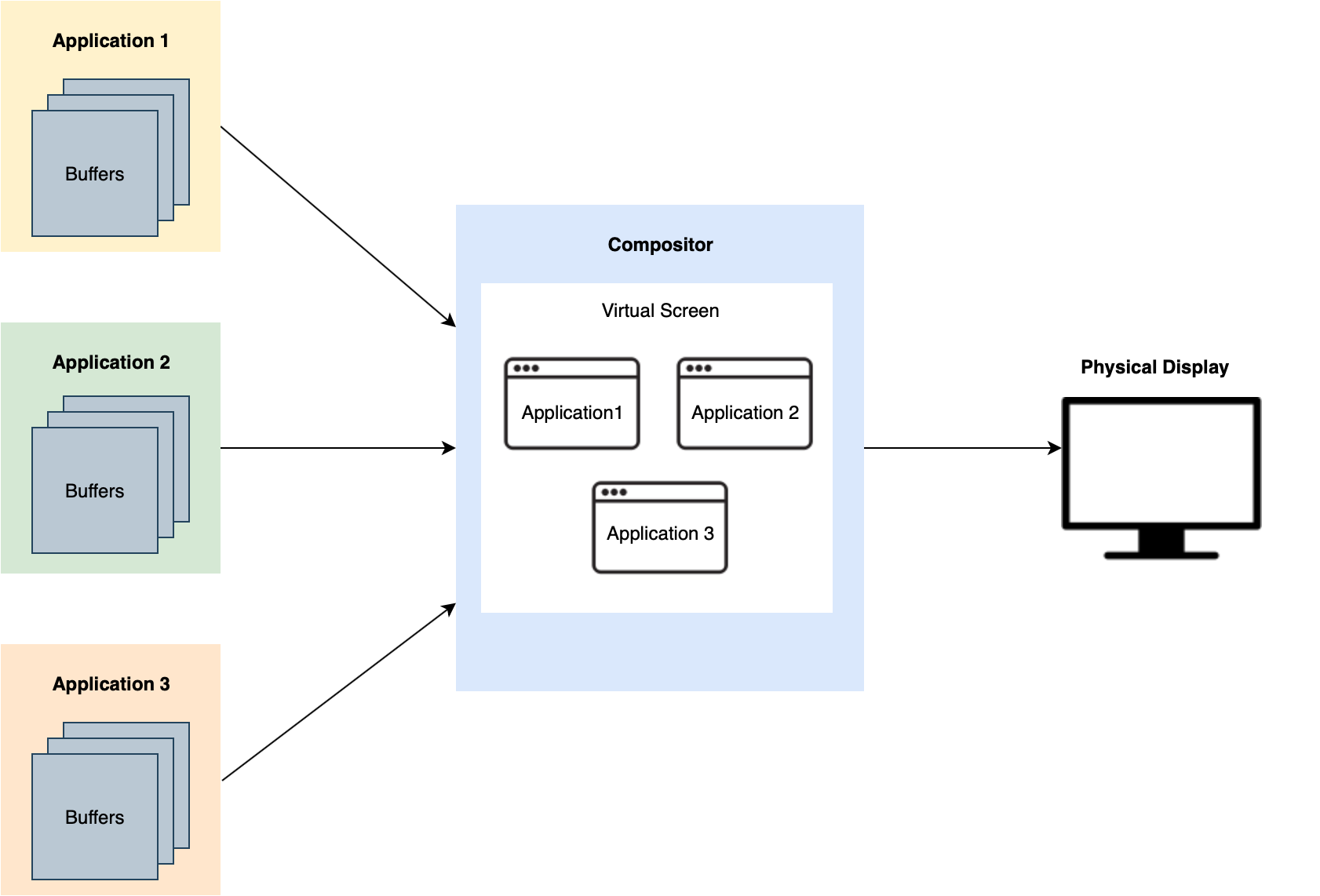Wayland is a display server protocol that helps you to create multi-process systems. Multiple client applications ("clients") can render their own content to off-screen buffers. These buffers are then passed to a display server, often called a compositor, using the Wayland protocol. Finally, the compositor composites and positions the content on a physical display.
In a single-process system, all parts of the UI run in one, single process. In a multi-process system, all clients run in their own, dedicated process. With Qt, at any point in your development process, you can choose to switch between single-process and multi-process.

Multi-Process Client Architecture

Single Process Client Architecture
The use of multi-process has the following benefits:
| Stability | |
|---|---|
| Easier to recover when clients hang or crash |
If you have a complex UI, then multi-process is useful because if one part of the UI crashes, it doesn't affect the entire system. Similarly, the display won't freeze, even when one client freezes. 注意: If your client is mandated by law to render safety-critical information, consider using Qt Safe Renderer Overview . |
| Protection against possible memory leaks | In a multi-process system, if one client has a memory leak and consumes lots of memory, that memory is recovered when that client exits. In contrast with single-process, the memory leak remains until the entire system restarts. |
| 性能 |
|---|
| If you have a CPU with multiple cores, a multi-process system can help distribute the load evenly across different cores, making more efficient use of your CPU. |
X11, a desktop protocol from the 80s, no longer fits with how graphics hardware works today. It is large, complex, and lacks customizability. In fact, it is difficult to run a client fluidly with X11, and reach 60 fps without tearing. Wayland, in contrast, is easier to implement, has better performance, and contains all the necessary parts to run efficiently on modern graphics hardware. For embedded, multi-process systems on Linux, Wayland is the standard.
However, if you are working with old hardware or legacy applications, then Wayland may not be a good option. The Wayland protocol is designed with security and isolation in mind, and is strict/conservative about what information and functionality is available to clients. While this leads to a cleaner and more secure interface, some functionality that legacy applications expect may no longer be available on Wayland.
Particularly, there are three common use cases where Wayland may not be the best option:
Back when X11 was very popular, developers wrote their own custom solutions to circumvent X11 issues. Older Qt versions had the Qt Windowing System (QWS), which is now discontinued. Today, most of these use cases are covered by Wayland, and custom solutions are becoming less and less common.
Use of multi-process systems do bring about the following trade-offs:
For Clients
Qt clients can run on any Wayland compositor, including Weston, the reference compositor developed as part of the Wayland project.
Any Qt program can run as a Wayland client (as part of a multi-process system) or a standalone client (single-process). This is determined on startup, where you can choose between the different backends. During the development process, you can develop the client on the desktop first, then test it on the target hardware later. You don't need to run your clients on the actual target hardware all the time.

Single-Process Client Development
If you develop on a Linux machine, you can also run the compositor within a window on your development machine. This lets you run clients in an environment that closely resembles the target device. Without rebuilding the client, you can also run it with
-platform wayland
to run it inside the compositor. If you use
-platform xcb
(for X11), you can run the client on the desktop. In other words, you can start developing your clients before the compositor is ready for use.
For Servers
The server, or compositor, connects to the display and shows the contents of each client on the screen. The compositor handles input and sends input events to the corresponding client. In turn, each client connects to the compositor and sends the content of its windows. It's up to the compositor to decide:
This means, it's up to the compositor to decide what a multi-process system is. For instance, the clients could be part of a 3D scene with windows on the walls, on a VR system, mapped to a sphere, and so on.
The Qt Wayland Compositor is an API for building your own compositor. It gives you full freedom to build a custom compositor UI and manage the windows of various clients. You can combine both Qt Quick and QML with the Qt Wayland Compositor to create impressive, imaginative UIs. For more information, see Qt Wayland Compositor .